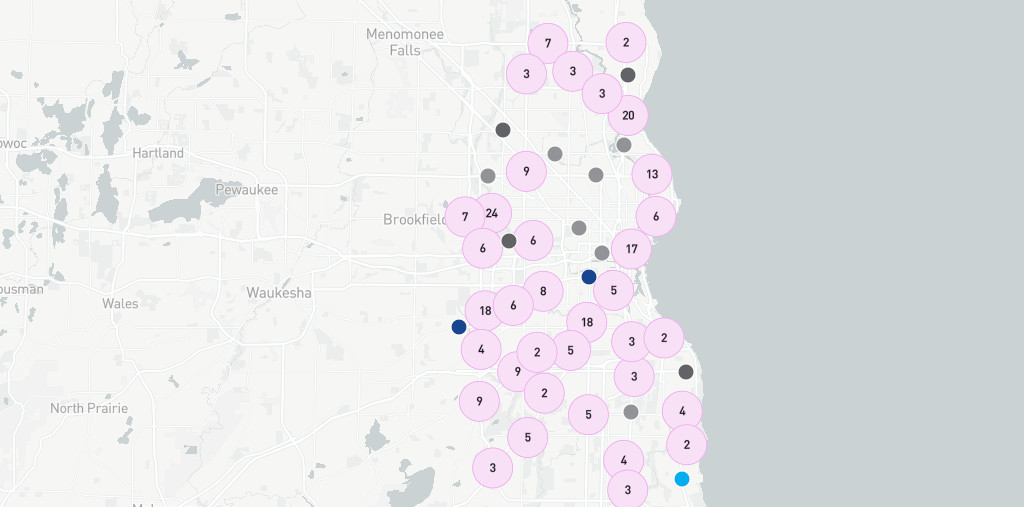 If a city’s median household income is $70,000, its residents surely spend more on dental care than than the residents of the neighboring town where median household income is $60,000, right? Not necessarily. Though median household income is often accepted as the sole measurement of an area’s wealth and thus, demand for services, it’s really only a fairly reliable summary of a much more complicated picture. First, note the definition of “median”. It’s generally the statistician’s preferred simple measure of a data set’s center (as opposed to average). But, all that we can accurately gather is that half of households earn more and half earn less. From this number alone, we don’t even know how many households there are, let alone the total combined income of all residents or if the majority of households over the median earn slightly more than the median or a lot more than the median. Those issues aside, there are a number of factors which may cause residents of two areas where median household income is identical to spend drastically different amounts on dental care. The biggest differences can be tied to location. For instance, rural areas have a lower cost of living and residents who earn the same as urban dwellers or suburbanites subsequently have more to spend on everything else. On the other hand, the supply of dental services in truly rural areas is extremely limited and may prevent residents from visiting their doctor frequently. Of course crossing state lines will also change the availability and coverage of health insurance and programs like CHIP and Medicaid. In an effort to help spur economic development, the Bureau of Labor Statistics (BLS) annually asks a sample size of consumers to keep a diary of their purchases in what is known as the Consumer Expenditures Survey. The BLS categorizes and totals each purchase and then makes this data available to anyone willing to sort through it. Among the categories of goods which are reported are those which you might expect to find like “rent” and “cell phone service” as well as those which you may not expect like “bathroom linens”, “pies, tarts, turnovers” and even “dental services”. Though many other types of categories such as food are broken into very specific subcategories, dental services are all lumped together. That is, there is no separation by specialty or payment type. Since this is the most specific data available, dental demographers are left to interpret how a reported number may be affected by specific land uses such as military bases and retirement communities and further, what that might mean for a general dentist versus an orthodontist. The good news is that the dental community has this information at its disposal and that industry-specific professionals can you help you decipher it.
If a city’s median household income is $70,000, its residents surely spend more on dental care than than the residents of the neighboring town where median household income is $60,000, right? Not necessarily. Though median household income is often accepted as the sole measurement of an area’s wealth and thus, demand for services, it’s really only a fairly reliable summary of a much more complicated picture. First, note the definition of “median”. It’s generally the statistician’s preferred simple measure of a data set’s center (as opposed to average). But, all that we can accurately gather is that half of households earn more and half earn less. From this number alone, we don’t even know how many households there are, let alone the total combined income of all residents or if the majority of households over the median earn slightly more than the median or a lot more than the median. Those issues aside, there are a number of factors which may cause residents of two areas where median household income is identical to spend drastically different amounts on dental care. The biggest differences can be tied to location. For instance, rural areas have a lower cost of living and residents who earn the same as urban dwellers or suburbanites subsequently have more to spend on everything else. On the other hand, the supply of dental services in truly rural areas is extremely limited and may prevent residents from visiting their doctor frequently. Of course crossing state lines will also change the availability and coverage of health insurance and programs like CHIP and Medicaid. In an effort to help spur economic development, the Bureau of Labor Statistics (BLS) annually asks a sample size of consumers to keep a diary of their purchases in what is known as the Consumer Expenditures Survey. The BLS categorizes and totals each purchase and then makes this data available to anyone willing to sort through it. Among the categories of goods which are reported are those which you might expect to find like “rent” and “cell phone service” as well as those which you may not expect like “bathroom linens”, “pies, tarts, turnovers” and even “dental services”. Though many other types of categories such as food are broken into very specific subcategories, dental services are all lumped together. That is, there is no separation by specialty or payment type. Since this is the most specific data available, dental demographers are left to interpret how a reported number may be affected by specific land uses such as military bases and retirement communities and further, what that might mean for a general dentist versus an orthodontist. The good news is that the dental community has this information at its disposal and that industry-specific professionals can you help you decipher it.

.png)


